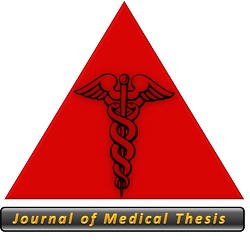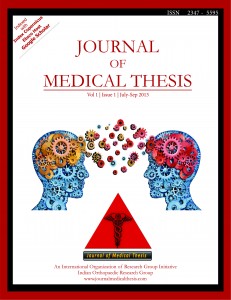Tag Archives: Conventional PFN Fixation
Treatment of Unstable Trochanteric Fracture Femur: A Comparision of the Functional Outcome with Conventional PFN Fixation V/S PFN A2 Fixation
Vol 11 | Issue 1 | January-June 2025 | page: 22-24 | Ibad Patel, Kannan Pugahzendi, Sachin Kale, Sanjay Dhar, Shikhar Singh, Kedar Ahuja
https://doi.org/10.13107/jmt.2025.v11.i01.238
Author: Ibad Patel [1], Kannan Pugahzendi [1], Sachin Kale [1], Sanjay Dhar [1], Shikhar Singh [1], Kedar Ahuja [1]
[1] Department of Orthopaedics, Dr. D.Y. Patil University School Of Medicine, Nerul, Navi Mumbai., Maharashtra, India.
Address of Correspondence
Dr. Ibad Patel
Department of Orthopaedics, Dr. D.Y. Patil University School Of Medicine, Nerul, Navi Mumbai., Maharashtra, India.
E-mail: iamibadpatel@gmail.com
Abstract
Background: Intertrochanteric fractures of the femur are a frequent occurrence among elderly patients and contribute significantly to orthopedic trauma cases. Recent advancements, including the Proximal Femoral Nail Antirotation (PFN A2) system featuring a helical blade, offer a novel approach to stabilization. This study aims to compare the clinical and radiological outcomes of patients managed with conventional PFN versus PFN A2 for unstable intertrochanteric fractures.
Hypothesis: PFN A2 demonstrate distinct advantages, including reduced operative blood loss early mobilization higher union rates and fewer complications. While the surgeon’s expertise remains essential to achieve favourable outcomes. PFN A2 may offer superior clinical performance especially in osteoporotic cases.
Clinical Importance: The helical blade design in PFN A2 offer better resistance to rotational stress and facilitates more secure anchorage in osteoporotic bone. This biomechanical benifit may explain the improved clinical outcomes observed in our cohort study.
Future Research: The A2 version, which incorporates a single helical blade, seeks to address these limitations by enhancing rotational stability and fixation, especially in osteoporotic bone. So goal is to initiate a discussion for better understanding of these fractures.
INTRODUCTION
With rising life expectancy and increasing osteoporosis rates, intertrochanteric femur fractures have become more prevalent, particularly in aging populations [4, 5]. While younger individuals typically sustain such injuries through high-impact trauma, elderly patients often incur them from low-energy falls [6]. Projections suggest that by 2025, around 1.6 million individuals will suffer from trochanteric fractures globally, with this figure expected to rise to 2.5 million by 2050, especially in Asia [4].
Management of unstable intertrochanteric fractures remains complex due to biomechanical instability and muscular stress at the fracture site [10, 11]. Delays or inadequate treatment can result in complications like malunion, non-union, or limb deformity [3]. Surgical intervention is the preferred approach to promote early mobilization and reduce morbidity [1]. While dynamic hip screws remain appropriate for stable fractures, intramedullary nailing techniques like PFN are more suitable for unstable patterns due to their biomechanical advantages [2, 7]. However, conventional PFN systems have been associated with issues such as implant cut-out, varus angulation, and lateral wall fractures [8]. The A2 version, which incorporates a single helical blade, seeks to address these limitations by enhancing rotational stability and fixation, especially in osteoporotic bone [12].
________________________________________
PFN vs PFN A2: A Biomechanical Comparison
Introduced in 1996 by AO/ASIF, the traditional PFN employs dual screws for axial compression and rotational stability [11]. Despite widespread usage, complications like screw cut-out and mechanical failure have been reported [3]. The PFN A2, introduced in 2003, replaces the dual screw configuration with a single helical blade [7, 9]. This design promotes better bone anchorage, reduced bone excavation, and improved stability in osteoporotic bone [12]. Moreover, the tapered distal shaft of PFN A2 reduces femoral stress, potentially minimizing failure rates [8]. Studies have indicated improved outcomes, including lower intraoperative bleeding and earlier postoperative mobility, with PFN A2 [2, 7].
________________________________________
AIMS AND OBJECTIVES
Aim: To analyze and compare clinical and radiological outcomes in patients with unstable intertrochanteric femur fractures treated using PFN and PFN A2 systems.
Objectives:
• To assess postoperative radiographic results for each fixation technique.
• To compare functional recovery based on Harris Hip Scores.
• To conduct a prospective evaluation of 50 adult patients undergoing treatment for unstable intertrochanteric fractures.
________________________________________
MATERIALS AND METHODS
Study Design and Setting: This was a prospective, randomized, controlled study conducted at Dr. D.Y. Patil University School of Medicine, Navi Mumbai. Ethical clearance was obtained, and all patients provided informed consent.
Participants: The study included 50 adult patients with unstable intertrochanteric fractures, randomized into two groups of 25. Group A was treated with conventional PFN, while Group B received PFN A2.
Inclusion Criteria:
• Age over 20 years
• Male and female patients
• Closed unstable intertrochanteric fractures (classified as AO/ASIF 31A2 or 31A3)
• Informed consent obtained
Exclusion Criteria:
• Age under 20 years
• Open or pathological fractures
• Pre-existing hip disorders or multiple trauma cases
• Neurological impairments
Data Analysis: Descriptive statistics and inferential analyses were conducted using software tools such as GraphPad and Microsoft Excel. Appropriate statistical tests were selected based on data distribution and type.
________________________________________
DISCUSSION
Unstable intertrochanteric fractures, especially among the elderly, necessitate prompt surgical fixation [5, 6]. In this study, patients treated with PFN A2 experienced several favorable outcomes compared to those treated with the standard PFN method. These included reduced intraoperative bleeding, fewer complications, earlier postoperative ambulation, and improved union rates. Our findings align with earlier research by Sharma et al. [7], and Gadegone et al. [8], which highlighted PFN A2's advantages in enhancing fixation stability and reducing mechanical complications.
The helical blade design in PFN A2 offers better resistance to rotational stress and facilitates more secure anchorage in osteoporotic bone [12]. This biomechanical benefit may explain the improved clinical outcomes observed in our cohort.
________________________________________
CONCLUSION
Both PFN and PFN A2 systems are effective in managing unstable intertrochanteric femoral fractures. However, PFN A2 demonstrates distinct advantages, including reduced operative blood loss, early mobilization, higher union rates, and fewer complications. While the surgeon's expertise remains essential to achieve favorable outcomes, PFN A2 may offer superior clinical performance, especially in osteoporotic cases.
References
1. Chandrasekhar S, Manikumar CJ. Functional analysis of proximal femoral fractures treated with proximal femoral nail. J Evid Based Med Healthc. 2018;5(1):13-17.
2. Kashid MR et al. Comparative study between PFN and PFNA in managing unstable trochanteric fractures. Int J Res Orthop. 2016;2(4):354-358.
3. Salphale Y et al. Proximal Femoral Nail in reverse trochanteric femoral fractures: 53-case analysis. Surg Sci. 2016;7(07):300-308.
4. Gulberg B et al. Worldwide projection for hip fractures. Osteoporos Int. 1997;7:407-413.
5. Melton LJ 3rd et al. Trends in hip fracture incidence. Osteoporos Int. 2009;20(5):687-694.
6. Sheehan SE et al. Proximal femoral fractures: what radiologists should know. Radiographics. 2015;35(5):1563-1584.
7. Sharma A et al. PFN vs PFNA in unstable intertrochanteric fractures. J Clin Diagn Res. 2017;11(7):RC05.
8. Gadegone WM et al. Augmented PFN in unstable fractures. SICOT-J. 2017;3.
9. Carulli C et al. Comparison of fixation systems for femoral fractures. Clin Cases Miner Bone Metab. 2017;14(1):40.
10. Gray H, Standring S. Gray's Anatomy. Churchill Livingstone; 2008.
11. Orthobullets. Hip Anatomy. Available at: https://www.orthobullets.com/recon/12769/hip-anatomy
12. Qian JG et al. Femoral-neck structure study via finite element analysis. Clin Biomech. 2009;24(1):47-52.
| How to Cite this Article: Patel I, Pugahzendi K, Kale S, Dhar S, Singh S, Ahuja K|Treatment of Unstable Trochanteric Fracture Femur: A Comparision of the Functional Outcome with Conventional PFN Fixation V/S A2PFN Fixation | Journal of Medical Thesis | 2025 January-June; 11(1): 22-24. |
Institute Where Research was Conducted: Department of Orthopaedics, Dr. D.Y. Patil University School of Medicine, Nerul, Navi Mumbai, Maharashtra, India.
University Affiliation: Dr. D.Y. Patil University, Nerul, Navi Mumbai, Maharashtra, India.
Year of Acceptance of Thesis: 2019
Full Text HTML | Full Text PDF




